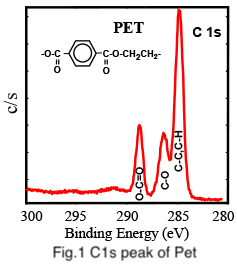
A leading postulate is that the iron-containing active sites exist primarily in a pyridinic Fe-N 4 ligation environment, yet, molecular model catalysts generally feature pyrrolic coordination. Auger peaks are often more sensitive to surface chemistry than XPS peaks, and the combination of the two as demonstrated in the Wagner plot is often the key to examining surface chemistry.Iron- and nitrogen-doped carbon (Fe-N-C) materials are leading candidates to replace platinum catalysts for the oxygen reduction reaction (ORR) in fuel cells however, their active site structures remain poorly understood. The purpose of this demo is to demonstrate that XPS peak chemical shifts alone are often not enough to elucidate surface chemical states. The final In 3d 5/2 BE around 445.0 eV and M 4N 45N 45 Auger KE around 410.0 eV is entirely consistent with metallic In. The larger Auger KE tends towards the In 2O 3 oxide state since the hydroxides have smaller Auger kinetic energies with a similar XPS binding energy. The Wagner plot identifies this clearly as one of the indium oxide/hydroxide chemical states. The initial In 3d 5/2 BE was around 445.0 eV with an In M 4N 45N 45 KE of around 406.5 eV. The Wagner plot shows the change of ~ -0.5 eV in In 3d 5/2 BE and + 3.5 eV in In M 4N 45N 45 KE to be consistent with an In 2O 3 surface being cleaned to a metallic In surface. After very aggressive sputtering the M 4N 45N 45 Auger peak kinetic energy increases to about 410.0 eV. The very weak XPS In 3s peak also becomes more prominent. The kinetic energy of the M 4N 45N 45 Auger peak stays unchanged through most of the sputtering at ~ 406.5 eV, though the strength of the Auger structures does increase consistently as the surface is cleaned. The M 4N 45N 45 peak is the one considered in the Wagner plot above. The Auger structures, like the In 3d XPS doublet, is clearly visible only after surface contamination is removed by sputtering. The last image shows the In MNN Auger region. The Wagner plot above shows that little difference in XPS BE of the 3d 5/2 should be expected between metallic indium and oxide/hydroxide chemical states- no more than 1 eV and possibly less depending upon which tabulated values are considered "standards". Because of uncertainties in tabulated XPS values this alone says very little about the surface indium chemistry.

It should be noted that through very aggressive sputtering- up to 5 ♚ at 3 kV- the In 3d doublet increases in strength, but the BE of the 3 d 5/2 peak shifts no more than -0.5 eV lower in binding energy. Sputtering immediately increases the strength of the In 3d 5/2-3d 3/2 doublet as the C 1s signature of surface organic contamination is greatly reduced. The second image shows the In 3d doublet. In(OH) 3 and In(OH) 3*nH 2O can only be differentiated by a shift in the M 4N 45N 45 Auger line.Ī heavily oxidized In foil was sputtered while performing XPS. Also phases with little difference in the XPS 3d 5/2 binding energy, such as In 2O 3 and In(OH) 3, have a much more significant chemical shift in the Auger M 4N 45N 45 kinetic energy. What is immediately evident is that chemical states that might be difficult to identify through small chemical shifts in the XPS 3d 5/2 binding energy- might be easy to identify through huge changes in the Auger M 4N 45N 45 kinetic energy, as in the case of In and In 2O 3. Each chemical state is indicated with horizontal and vertical lines indicating the range of the available data- not the uncertainty in the available data.


The diagonal lines are lines of constant modified Auger parameter- the sum of the XPS binding energy and Auger kinetic energy. The Wagner plot shows the binding energy of the XPS In 3d 5/2 peak on the X-axis and the kinetic energy of the Auger In M 4N 45N 45 peak on the Y-axis. The Wagner plot for In, In 2O 3, In(OH) 3 and In(OH) 3*nH 2O is shown. Metallic indium can be differentiated from the indium oxide and hydroxide phases, but the oxide and hydroxide chemical states can't be differentiated using the XPS BE chemical shift alone. The corresponding In 3d 5/2 BE's for In 2O 3 are 444.8 ± 0.2 eV. In the case of indium metal, the In 3d 5/2 XPS BE is 443.8 ± 0.1 eV based on the entries in the NIST XPS database. In some cases the shift of XPS lines is insufficient to identify chemical states. This has been demonstrated in the case of AuO x surface oxidation elsewhere in this blog. The high energy resolution of XPS, < 1 eV, allows one to identify chemical states through chemical shifts- shifts of the core level XPS binding energies due to the charge transfer that occurs in the binding of different chemical states.


 0 kommentar(er)
0 kommentar(er)
